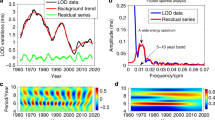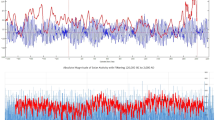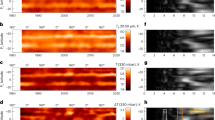Abstract
THE establishment of the observatory at Huancayo, Peru, near the magnetic equator, led to the discovery of daily magnetic variations, both solar and lunar, approximately twice as great as those previously found in other tropical regions. McNish1 has sought to explain this anomaly by qualitatively modifying the Balfour Stewart – Schuster 'dynamo' theory to allow for the non-coincidence of the earth's magnetic and geographic axes. According to McNish, enhanced magnetic variations should occur in the areas between the magnetic and geographic equators. On the other hand, Egedal2 and Chapman3 have recently put forward data from tropical regions which appear to show that the distribution of the phenomenon is more complex than could be explained by McNish's suggestion.
This is a preview of subscription content, access via your institution
Access options
Subscribe to this journal
Receive 51 print issues and online access
$199.00 per year
only $3.90 per issue
Buy this article
- Purchase on Springer Link
- Instant access to full article PDF
Prices may be subject to local taxes which are calculated during checkout
Similar content being viewed by others
Author information
Authors and Affiliations
Rights and permissions
About this article
Cite this article
MARTYN, D. Daily Magnetic Variations near the Equators. Nature 163, 685–686 (1949). https://doi.org/10.1038/163685a0
Issue Date:
DOI: https://doi.org/10.1038/163685a0
This article is cited by
-
Determination of the Ground Location of the Magnetic Dip Equator in India
Nature Physical Science (1971)
-
Effect of Magnetic Disturbances on the Equatorial Ionospheric Jet Current
Nature (1962)
Comments
By submitting a comment you agree to abide by our Terms and Community Guidelines. If you find something abusive or that does not comply with our terms or guidelines please flag it as inappropriate.



